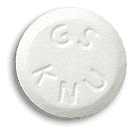By
Liz Highleyman
 |
|
Adefovir
(Hepsera)
|
|
Lamivudine,
the first oral nucleoside analog used to treat chronic
hepatitis B, has potent antiviral activity, but HBV develops
resistance mutations relatively easily and rapidly, compromising
the effectiveness of long-term therapy. Combining drugs makes
it more difficult for the virus to mutate enough to overcome
them.
Hong
Joo Kim and colleagues from Sungkyunkwan University in Seoul
conducted a study to compare strategies for "rescue therapy"
for individuals who developed resistance to lamivudine.
The analysis included 104 chronic hepatitis B patients who
were failing lamivudine treatment, randomly allocated into
3 treatment arms:
 |
Group
1 (n = 24): switch from lamivudine
monotherapy to 1.0 mg once-daily entecavir
monotherapy; |
 |
Group
2 (n = 44): switch from lamivudine monotherapy to 10 mg
once-daily adefovir monotherapy; |
 |
Group
3 (n = 36): stay on lamivudine and add 10 mg once-daily
adefovir. |
Results
 |
After
6 months of rescue therapy, patients receiving lamivudine/adefovir
add-on therapy were significantly more likely to achieve
undetectable HBV DNA (< 300 copies/mL) than those in
either monotherapy arm (P = 0.003): |
| |
 |
Entecavir
monotherapy: 33.3%; |
 |
Adefovir
monotherapy: 27.3%; |
 |
Lamivudine/adefovir
combination: 68.6%. |
|
 |
The
decrease in HBV DNA viral load was significantly larger
in the lamivudine/adefovir add-on group compared with
the entecavir monotherapy group. |
 |
Viral
breakthrough and genotypic resistance were significantly
more common in the monotherapy groups, and not seen in
the combination therapy arm, 24 months after starting
antiviral treatment (P < 0.01): |
| |
 |
Entecavir
monotherapy: 6 patients (25.0%); |
 |
Adefovir
monotherapy: 6 patients (13.6%); |
 |
Lamivudine/adefovir
combination: no cases. |
|
 |
The cumulative rate of hepatitis B "e" antigen
(HBeAg) seroconversion was significantly higher in the
adefovir/lamivudine add-on and adefovir monotherapy groups
compared with the entecavir monotherapy group (P = 0.022). |
 |
Alanine
aminotransferase (ALT) normalization was more likely in
the entecavir monotherapy and adefovir/lamivudine add-on
arms compared with the adefovir monotherapy arm (75.0%,
74.3%, and 65.9%, respectively), but the difference did
not reach statistical significance. |
Based
on these findings, the researchers concluded, "Adefovir
add-on treatment in patients with lamivudine-resistant chronic
hepatitis B suppresses HBV replication more effectively than
entecavir or adefovir monotherapy."
Additionally, they continued, "no genotypic resistance
was detected in the adefovir add-on group."
Investigator affiliation: Department of Internal Medicine,
Kangbuk Samsung Hospital, Sungkyunkwan University, Seoul,
Korea.
8/27/10
Reference
HJ
Kim, JH Park, DI Park, and others. Rescue therapy for lamivudine-resistant
chronic hepatitis B: comparison between entecavir 1.0 mg monotherapy,
adefovir monotherapy and adefovir add-on lamivudine combination
therapy. Journal of Gastroenterology and Hepatology
25(8): 1374-1380 (Abstract).
August 2010.
